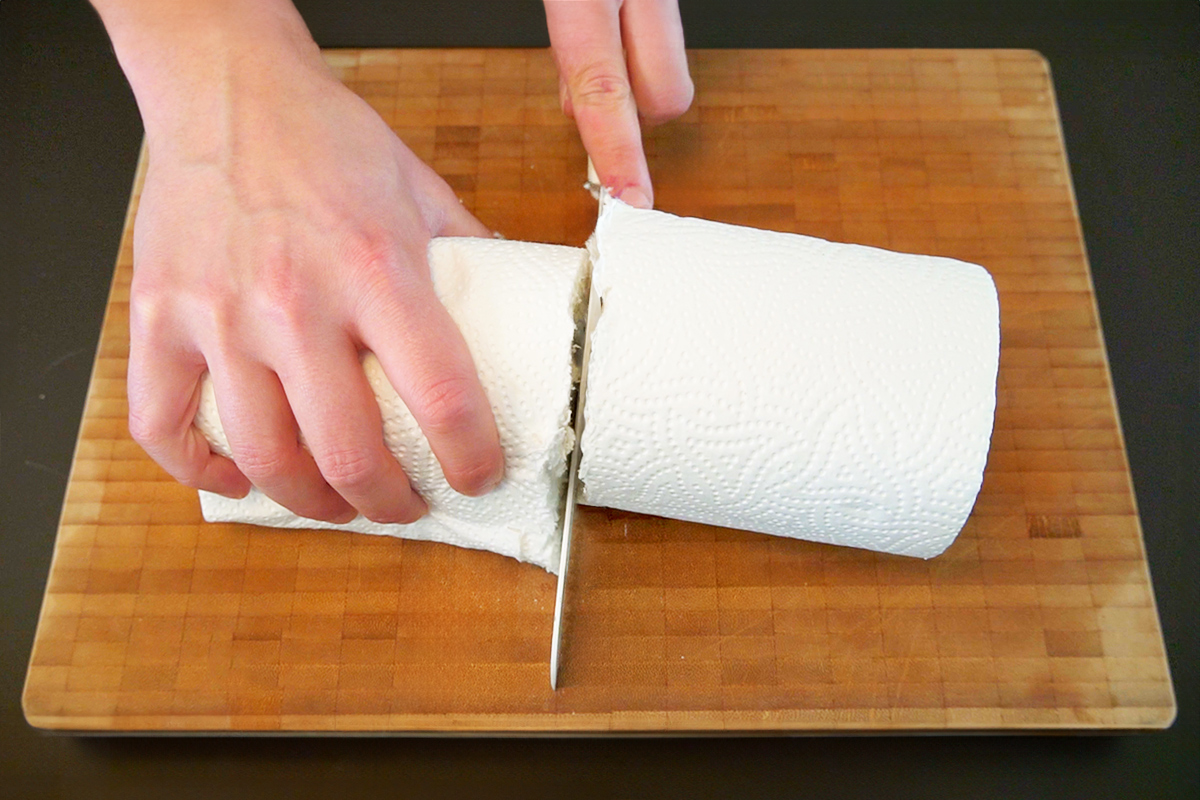Beauty standards come and go faster than you can scroll through your For You Page, but one thing people always seem to covet is a defined jawline. The problem: Your jawline’s overall shape and profile largely hinges on your bone structure. There are ways to fake a sharper jawline — contouring being the preferred method of many — but the effect is temporary. A new social media trend dubbed “mewing” is being touted as a more long-lasting solution.
Proponents of the practice claim mewing can help make your jaw look slimmer and more sculpted, even altering its shape entirely over time. And we won’t lie: The many before-and-afters showcased on TikTok are compelling. But we had to dig deeper to find out whether mewing has provable merit. Ahead, get the 411 on this viral social media trend and learn whether or not the practice is worth adopting.

What Is Mewing?
Mewing — named for John Mew, the British orthodontist who developed the technique — involves pressing the tongue against the roof of your mouth rather than letting it rest in its natural position. The practice hinges on “orthotropics,” Mew’s theory that crooked teeth and jaw troubles are due not to genetics, but to humans’ modern (and, in comparison to our ancestors, mostly soft) diet. According to Mew, mewing can help realign crooked teeth, strengthen the facial muscles, and help promote a tighter, more defined jawline — making it appealing for those who want to achieve a chiseled look without turning to filler or surgery.

Does Mewing Really Work?
According to the American Association of Orthodontists (AAO), there is no evidence to support the claim that mewing can sharpen your jawline. The shape of your jawline is influenced primarily by your bone structure, and pressing your tongue against the roof of your mouth won’t affect the alignment of your facial bones. What the practice can do, per the AAO, is disrupt tooth alignment or worsen bite problems and speech issues. It can also lead to facial pain, particularly if done frequently. As such, experts strongly advise against mewing. In fact, the U.K.’s General Dental Council is so opposed to the practice — and John Mew’s claims of its efficacy — that it officially revoked his dental license in 2017.

Can It Make You Look Better in Photos?
Mewing won’t change your face permanently but it can minimize the look of a double chin as you’re doing it. “Mewing is cap,” board-certified plastic surgeon Dr. Catherine Chang said on TikTok, “Your bone is fully formed [as an adult]. This requires jaw surgery. However, placing the tongue at the roof of the mouth, does lift the floor of the mouth so you look better in photos. However, this is only temporary.” Its success also depends on the shape of your jaw and mouth.

Can You Achieve a Sharper Jawline Without Surgery?
Surgery is the only way to permanently change your jaw’s shape. However, if you’re simply looking to make your jawline look a little more sculpted, there are some things you can try. Often, a so-called double chin is due not to excess weight, but to water retention — the kind that can develop after a salty meal or as a response to allergies. Per a 2016 study published in PeerJ, practicing gua sha can help encourage lymphatic drainage, which may help alleviate puffiness. Using a cold compress can also help minimize swelling, making the skin appear firmer and tighter, at least temporarily.
A proper skin care routine is also paramount. As we age, our skin loses collagen (a protein that gives skin its structure) at a rate of about 1% per year. Unprotected sun exposure can speed up how quickly that collagen is lost, exacerbating age-related concerns such as wrinkles and sagging skin. While wearing sunscreen won’t tighten your jawline, it can help prevent the premature loss of collagen that can lead to loose, sagging skin. Incorporating retinol into your routine can also help firm and tighten the skin.
Ultimately, though, neither gua sha nor targeted skin care will change your bone structure. If you have concerns about your jaw’s shape or alignment, it’s best to schedule a consultation with a board-certified orthognathic surgeon. They can help determine the underlying cause of your concern and develop a plan to achieve your goals.
This article is for general informational purposes only.
Affiliate Disclaimer Medical Disclaimer
















 Unique Beauty is free for all users.
Unique Beauty is free for all users.